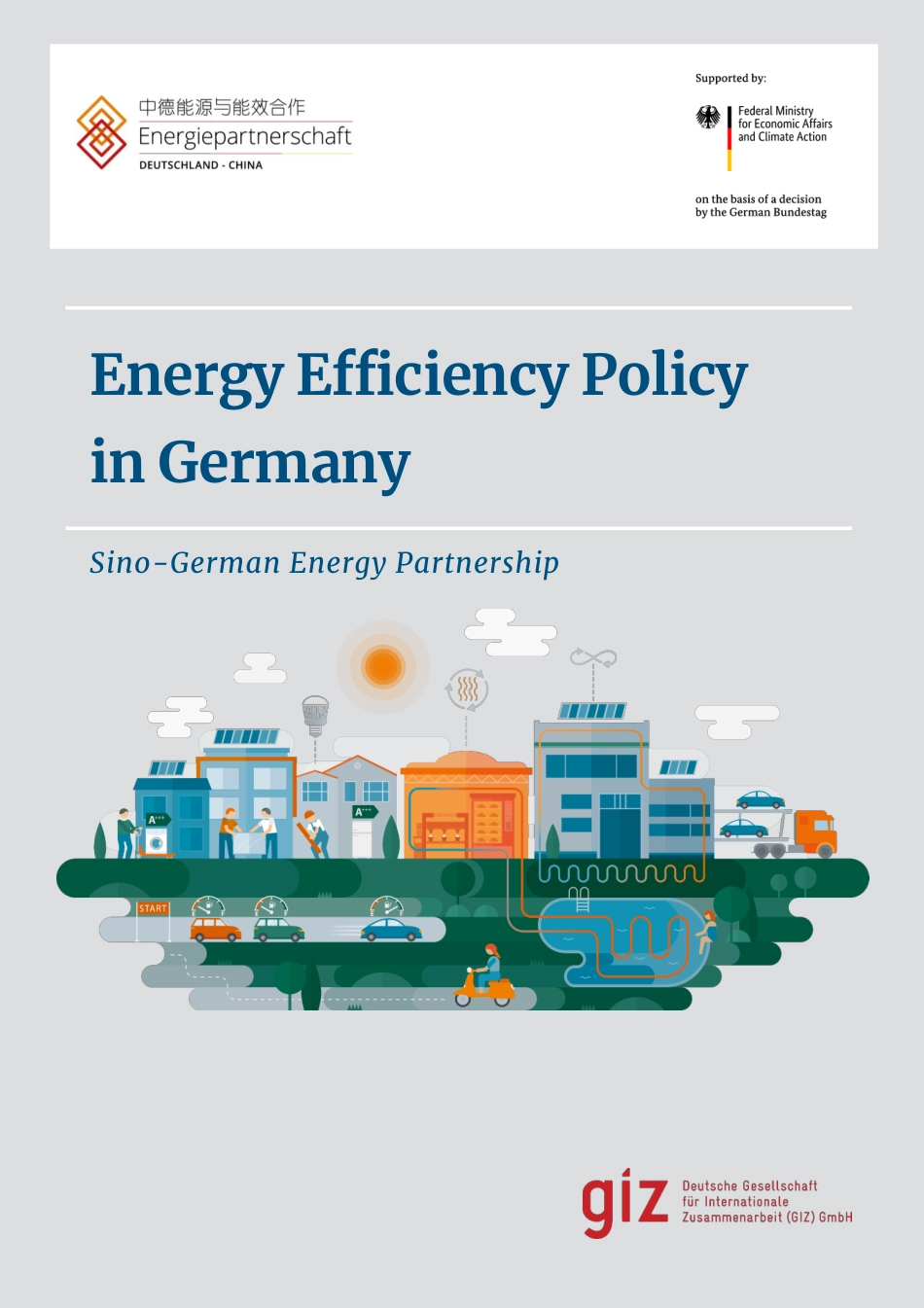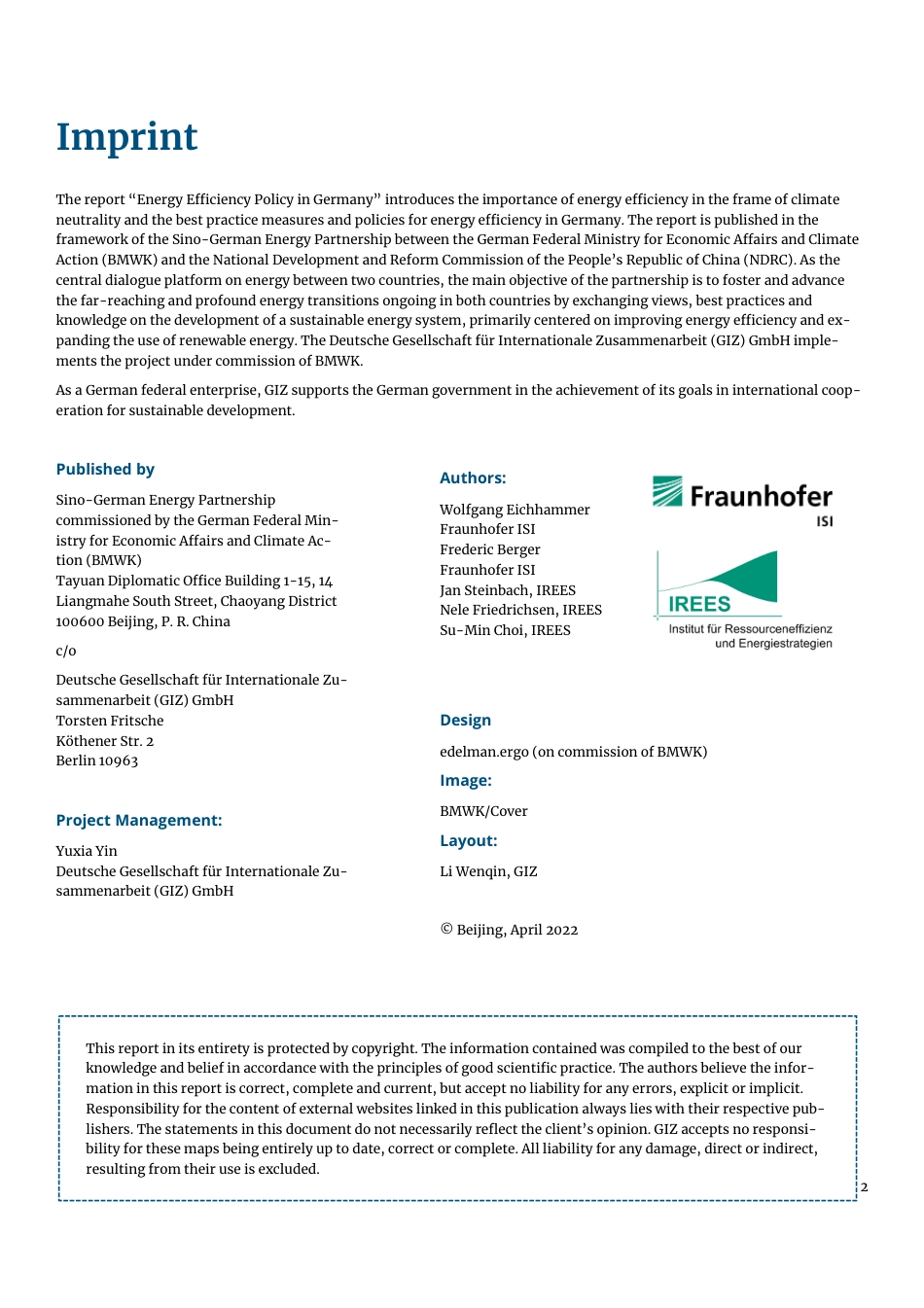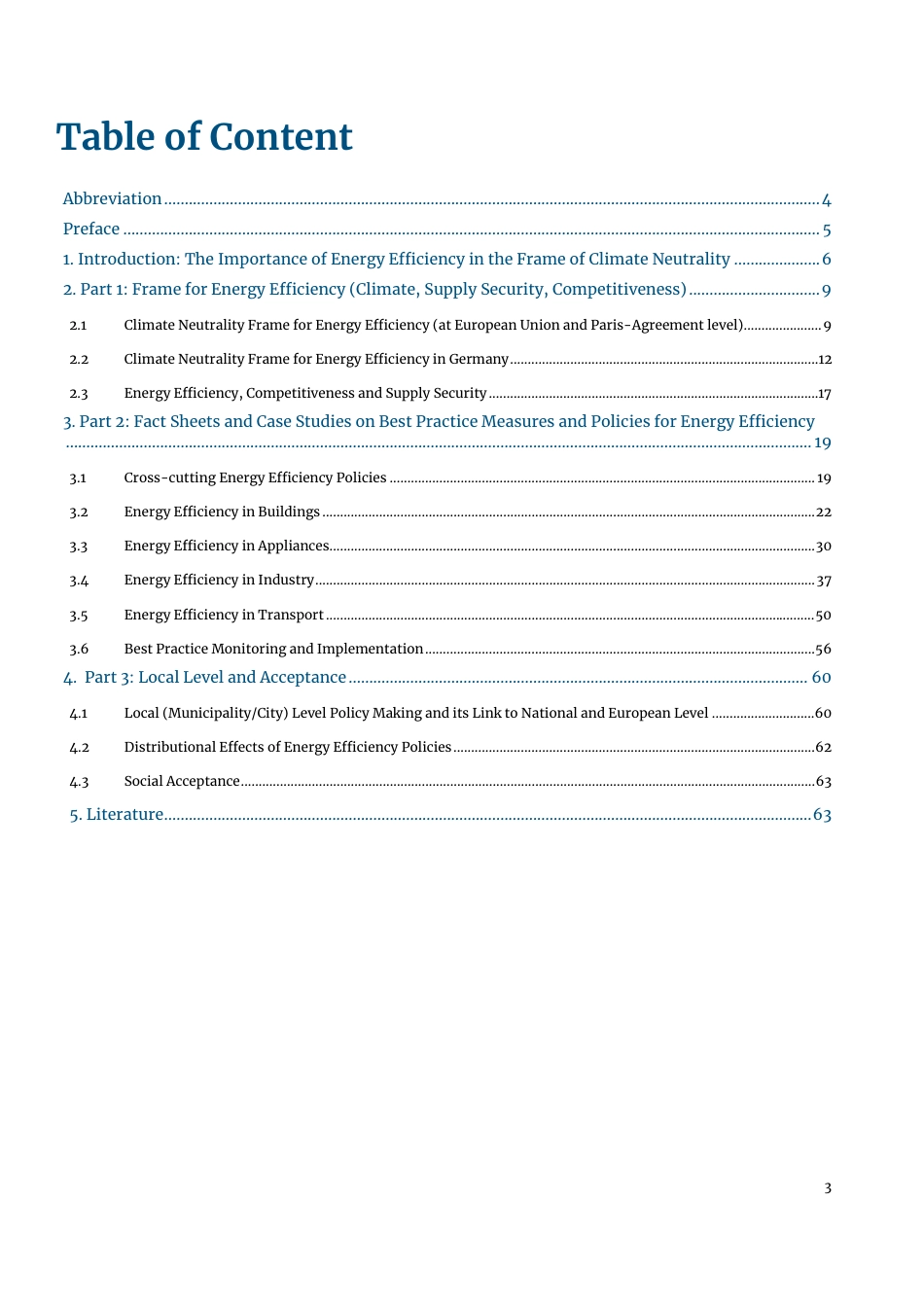1 Energy Efficiency Policy in Germany Sino-German Energy Partnership 2 Imprint The report “Energy Efficiency Policy in Germany” introduces the importance of energy efficiency in the frame of climate neutrality and the best practice measures and policies for energy efficiency in Germany. The report is published in the framework of the Sino-German Energy Partnership between the German Federal Ministry for Economic Affairs and Climate Action (BMWK) and the National Development and Reform Commission of the People’s Republic of China (NDRC). As the central dialogue platform on energy between two countries, the main objective of the partnership is to foster and advance the far-reaching and profound energy transitions ongoing in both countries by exchanging views, best practices and knowledge on the development of a sustainable energy system, primarily centered on improving energy efficiency and ex-panding the use of renewable energy. The Deutsche Gesellschaft für Internationale Zusammenarbeit (GIZ) GmbH imple-ments the project under commission of BMWK. As a German federal enterprise, GIZ supports the German government in the achievement of its goals in international coop-eration for sustainable development. Published by Sino-German Energy Partnership commissioned by the German Federal Min-istry for Economic Affairs and Climate Ac-tion (BMWK) Tayuan Diplomatic Office Building 1-15, 14 Liangmahe South Street, Chaoyang District 100600 Beijing, P. R. China c/o Deutsche Gesellschaft für Internationale Zu-sammenarbeit (GIZ) GmbH Torsten Fritsche Köthener Str. 2 Berlin 10963 Project Management: Yuxia Yin Deutsche Gesellschaft für Internationale Zu-sammenarbeit (GIZ) GmbH Authors: Wolfgang Eichhammer Fraunhofer ISI Frederic Berger ...



